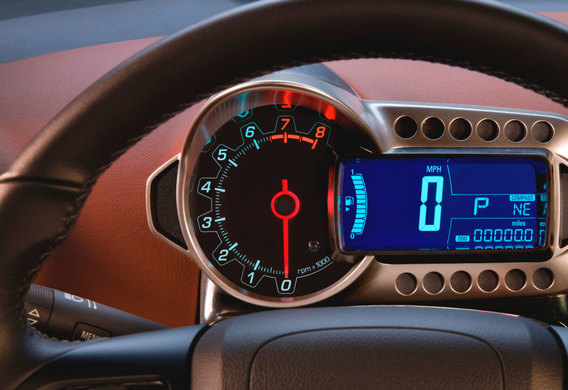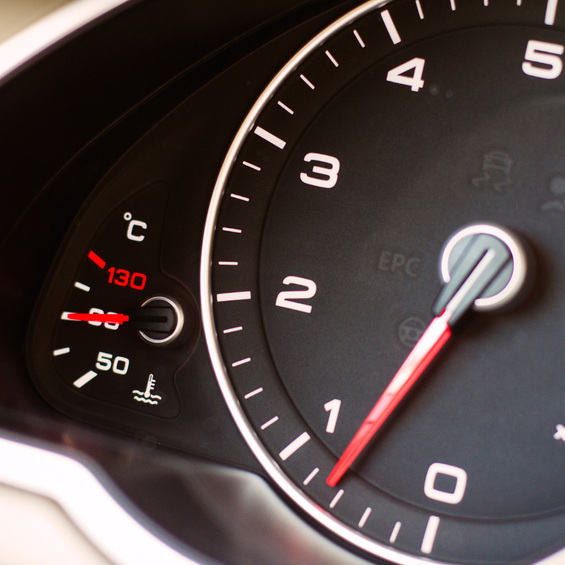
Nomination of a tachometer
In vain, some motorists underestimate the importance of the tachometer. This instrument shows the speed of the crankshaft of the engine, in the form of a value corresponding to the number of revolutions. With a tachometer, you can diagnose engine work at idling speed without leaving the car. In addition, the tachometer can be used to select the right moment for gear shifting to remain in the maximum engine torque area. It is a tachometer, usually close to a speedometer in the dashboard of a car.
List of tachometers and their devices
The very first tachometers-mechanical-today can be met in the retras-cars of the beginning of the 20th century. They shall be driven by a cable attached to the crankshaft or cranking shaft of the engine. The torque shall transmit the torque to the coil to which the dial-arrow is attached.
The scale of the tachometer starts at 500 rpm, the division price (long strokes) is usually a multiple of 10 or 5, most often-250 rpm. The scale area corresponding to the engine speed in this model is highlighted in red and called the red zone, it warns the driver that the speed limit is about to work and to slow down immediately so as not to damage the engine.
The staff is integrated into the dashboard of the car. The remote tachometer is mounted on the torpedo and is placed on a special "leg"
According to the method of communication of information, modern car tachometers are divided into two types-analog and digital.

The analog tachometer, as well as a mechanical one that has gone into the nonexistence, shows the data on the number of turns with the help of the ceferblate arrow. The principle of the tachometer operation is the conversion of engine speed into an angle of divergence from idling speed. The device includes sensors, wires, a chip, a magnetic coil, a calibrated dial-dial and an arrow. The magnetic coil accumulates the energy necessary to rotate the tachometer. The signal from the sensors installed at the crankshaft shall be transmitted through a chip to the magnetic coil which leads to the movement of the arrow on the scale.
The accuracy of the digital tachometers can be up to 100 rpm and analog to 500 rpm.
The digital tachometer is an electronic table that displays the number of revolutions per minute. The essence of the digital tachometer is to count the impulses for a certain period of time or, conversely, to measure the time interval between the adjacent impulses and transform the data into digital values.
A digital tachometer consists of a liquid crystal display, a central processing unit with a digital converter, a idling signal sensor, a pulse counter and an optron, an electronic device that converts an electrical signal into light. The signals received by the pulse counter are converted by the processor into digital values and displayed on the liquid crystal display panel.
The accuracy of the digital tachometers can be up to 100 rpm, analog-to 500 rpm.
The method of installation distinguisbetween the tachometers of regular and tolerable. A regular tachometer (usually analog) is built by the manufacturer into the dashboard of the car. The protruing tachometer is mounted on the torpedo, it is placed on the special "leg".
Operational issues
A digital tachometer is the best way to adjust idling speed. It can also be used to control the work of an analog tachometer and to make sure that the accuracy of the analog meter does not exceed the norm-the reading of the digital device is much more accurate. It is more convenient to use a regular tachometer at the time of the movement. The human brain works so that analog information in the form of an angle of lying is perceived faster, and the high precision of the testimony here is not so important.









